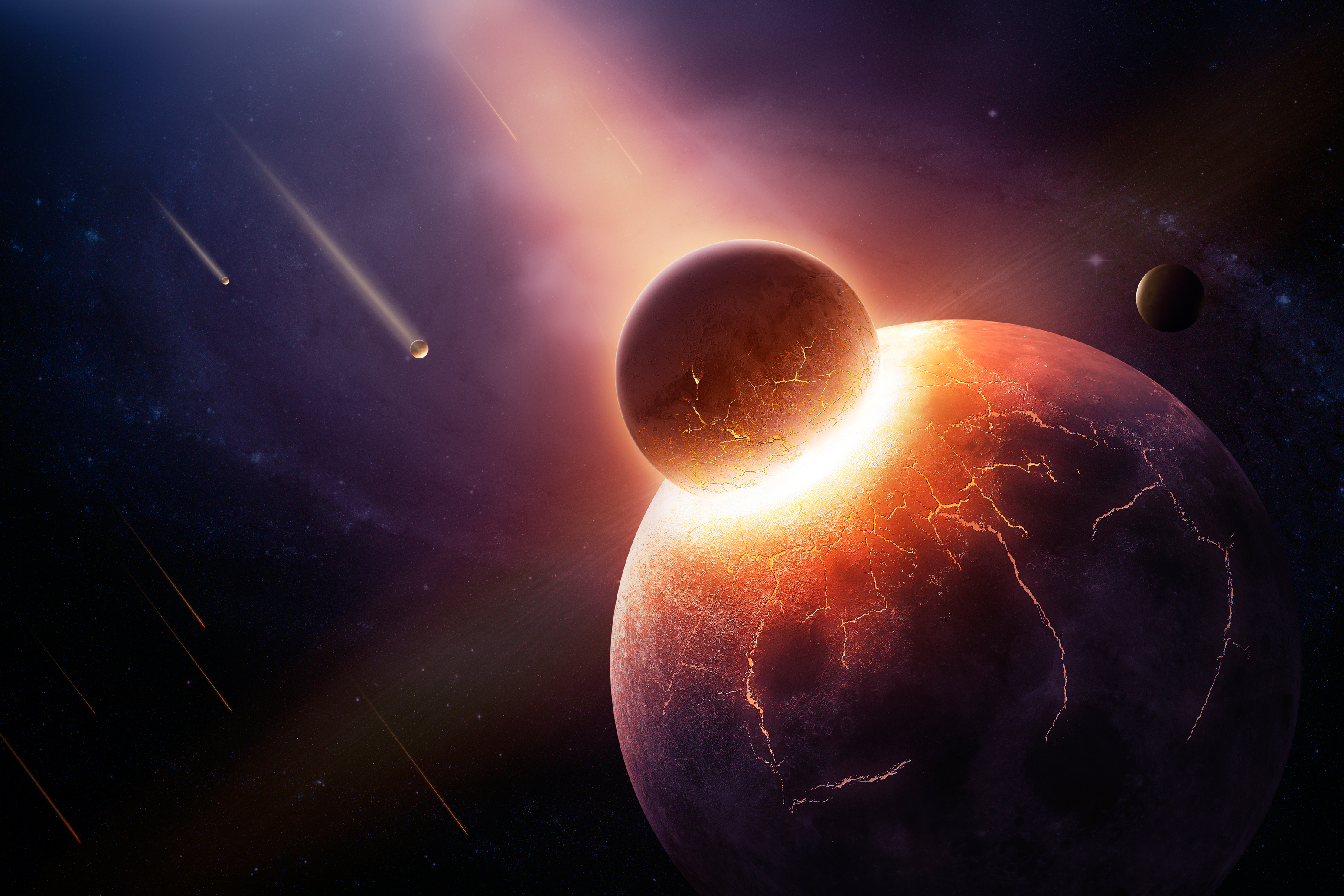Negative
20Serious
Neutral
Optimistic
Positive
- Total News Sources
- 5
- Left
- 3
- Center
- 1
- Right
- 1
- Unrated
- 0
- Last Updated
- 77 days ago
- Bias Distribution
- 60% Left


Asteroid Impact Shifted Ganymede's Axis
A new study in Scientific Reports reveals that a colossal asteroid, estimated to be 20 times larger than the one that caused the extinction of the dinosaurs, struck Jupiter's moon Ganymede about 4 billion years ago, significantly altering its axis. Ganymede, the largest moon in the Solar System, is known for its unique magnetic field and subsurface ocean. The asteroid impact created furrows forming concentric rings on Ganymede’s surface, which have intrigued scientists since the 1980s. Hirata Naoyuki from Kobe University used computer simulations to determine that the asteroid was around 190 miles in diameter, creating a transient crater up to 1,000 miles wide and causing a dramatic reorientation of the moon. This impact likely had significant implications for Ganymede's internal structure and potential for life. Future missions like ESA's JUICE, expected to arrive in 2031, aim to provide further insights into Ganymede's geological history.




- Total News Sources
- 5
- Left
- 3
- Center
- 1
- Right
- 1
- Unrated
- 0
- Last Updated
- 77 days ago
- Bias Distribution
- 60% Left
Negative
20Serious
Neutral
Optimistic
Positive
Related Topics
Stay in the know
Get the latest news, exclusive insights, and curated content delivered straight to your inbox.
